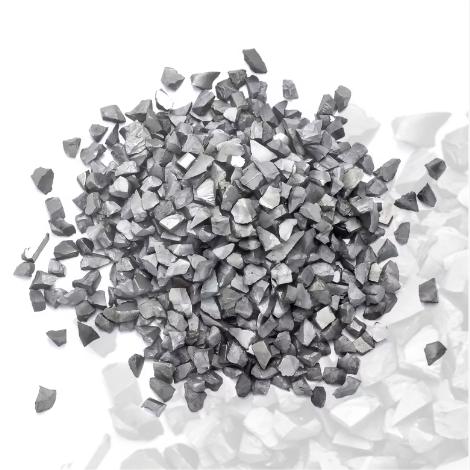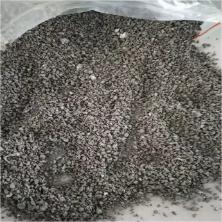**Title: The Magnetic Truth About Your Metal Plates: Sticking Point or Smooth Operator?**
(Are My Metal Plates Magnetic)
Ever wonder why that shiny steel plate clings stubbornly to a magnet while the sleek aluminum one slides right off? It’s a common puzzle. Your metal plates might look similar, but their hidden relationship with magnetism tells a fascinating story. This isn’t just about fridge magnets. Understanding magnetic plates matters for industries, hobbyists, and anyone curious about the materials shaping our world. Let’s uncover the secrets behind magnetic metal plates.
**What Makes Metal Plates Magnetic?**
At its heart, magnetism in metal plates comes down to the metal itself. Not all metals play nice with magnets. The key players are ferromagnetic materials. Think iron, nickel, cobalt, and some special alloys like certain stainless steels. These metals have a unique internal structure. Tiny regions inside them, called magnetic domains, act like mini magnets. Normally, these domains point in random directions. Their magnetic fields cancel each other out. The metal plate seems non-magnetic. But bring a strong magnet close. The external magnetic field forces many of these domains to line up in the same direction. Suddenly, their tiny magnetic fields add together. The plate becomes strongly magnetic itself. It attracts the magnet. Other metals, like aluminum, copper, brass, or lead, lack this special domain structure. Their atoms don’t line up easily. No magnetic attraction happens. The plate remains stubbornly non-magnetic. So, the first question about your plate isn’t its shape or shine, but its recipe: what metal is it made from?
**Why Aren’t All Metal Plates Magnetic?**
It seems logical. Metal equals magnetism, right? Wrong. Most metals actually resist magnetic attraction. Only a select few possess ferromagnetism. This special property depends entirely on the metal’s atomic structure and electron behavior. Metals like aluminum, copper, gold, silver, and titanium have electron configurations that don’t support the formation of stable magnetic domains. Their electrons are paired up in a way that cancels out magnetic moments. They are paramagnetic or diamagnetic. This means they might show a very weak attraction (paramagnetic) or even a weak repulsion (diamagnetic) in a strong magnetic field. You won’t notice it in everyday life. Their plates stay firmly non-magnetic. Even among steels, it varies. Common mild steel plates are strongly magnetic. But some stainless steels, particularly grades high in chromium and nickel (like 304 or 316), form a structure called austenite. This structure is non-magnetic. So, a stainless steel plate might be magnetic or not. It depends on its exact alloy mix and how it was processed. The rule is simple: ferromagnetic metals make magnetic plates; everything else doesn’t.
**How Can I Test If My Metal Plates Are Magnetic?**
Testing is simple. You don’t need a lab. Grab a common magnet – a fridge magnet works fine. Hold the magnet firmly. Bring it close to the surface of your metal plate. Does the magnet feel a pull? Does it stick firmly to the plate? If yes, your plate is magnetic. It contains significant amounts of iron, nickel, cobalt, or a magnetic alloy. If the magnet slides off easily, showing no attraction, your plate is non-magnetic. It’s likely made from aluminum, copper, brass, certain stainless steels, or another non-ferrous metal. For a stronger test, try a rare earth magnet (like neodymium). These super-strong magnets can sometimes detect very weak magnetic responses in metals that seem non-magnetic with a regular magnet. But for most purposes, a simple fridge magnet tells you what you need. Remember: test different spots. Sometimes surface coatings or treatments might interfere slightly, but the core metal behavior will dominate. If it sticks anywhere, it’s magnetic.
**Applications: Where Magnetic Metal Plates Shine**
Magnetism in plates isn’t just a curiosity. It drives countless practical uses. Picture electric motors and generators. Their cores often use stacks of thin magnetic steel plates (laminations). These plates channel the magnetic field efficiently, making the motor spin or the generator produce power. Transformers rely on the same principle. Magnetic plates are essential for solenoids and electromagnets too. Think about magnetic bases for dial indicators in workshops. They use magnetic plates to grip firmly onto steel surfaces. Magnetic chucks hold metal workpieces securely on milling machines and surface grinders. Magnetic door catches provide simple, reliable closure. Magnetic whiteboards use steel plates behind the surface. Your fridge door seals tightly because of magnetic strips attracting the steel frame. Magnetic shielding sometimes uses special alloys in plate form to redirect magnetic fields and protect sensitive equipment. Even in everyday life, magnetic plates hold things: tool holders in garages, magnetic knife strips in kitchens, magnetic name badges. The ability to attract and hold using magnetism makes these plates incredibly versatile and valuable.
**FAQs About Magnetic Metal Plates**
* **Q: Will a magnet stick to stainless steel plates?**
A: Maybe. It depends on the type. Common grades like 430 stainless are magnetic. Popular grades like 304 and 316 are usually non-magnetic. Always test with a magnet.
* **Q: Can a non-magnetic plate become magnetic?**
A: Generally, no. If a plate is made from aluminum, copper, or non-magnetic stainless, it won’t become magnetic. You can magnetize ferromagnetic plates further by stroking them with a strong magnet.
* **Q: Are thicker plates more magnetic?**
A: Thickness doesn’t change the material’s *type* of magnetism. A thick ferromagnetic plate might hold a magnet more securely, but a thin plate of the same material is still magnetic. A thick aluminum plate remains non-magnetic.
* **Q: Does painting or coating affect magnetism?**
A: A thin paint or coating won’t stop a strong magnet from attracting a ferromagnetic plate underneath. A very thick, non-metallic coating might weaken the attraction slightly but won’t eliminate it.
* **Q: Are magnetic plates always steel?**
(Are My Metal Plates Magnetic)
A: No, but steel is the most common. Plates made primarily from pure nickel, cobalt, or specific alloys like Permalloy can also be strongly magnetic. Iron plates are magnetic too.
Inquiry us
if you want to want to know more, please feel free to contact us. (nanotrun@yahoo.com)


